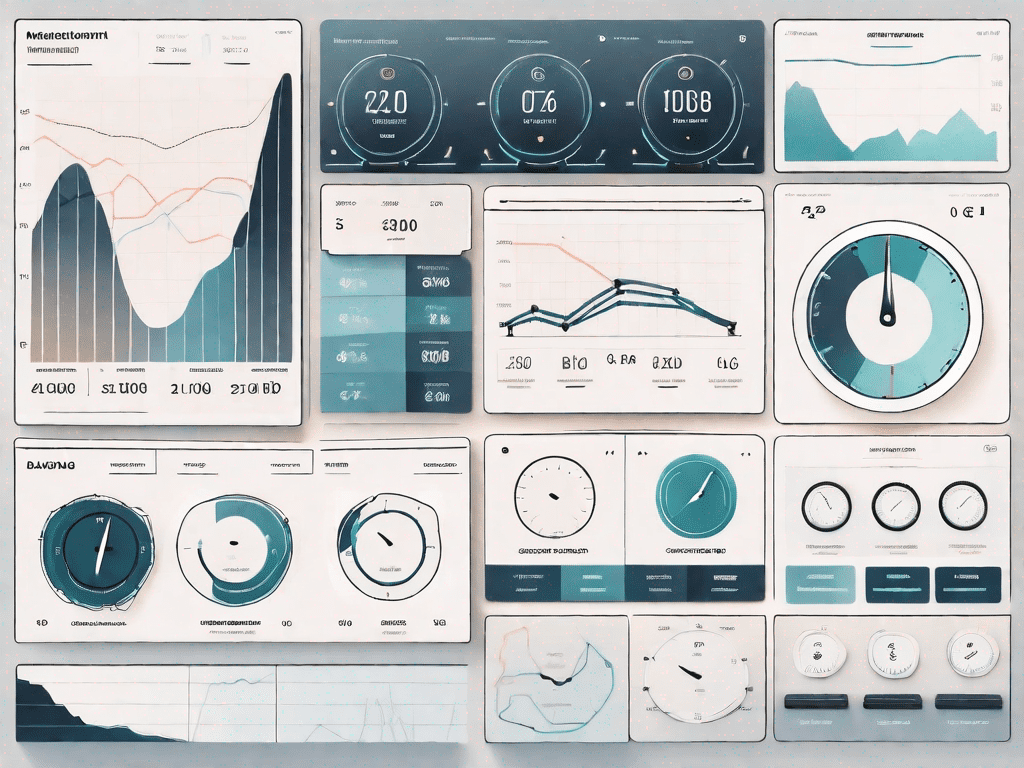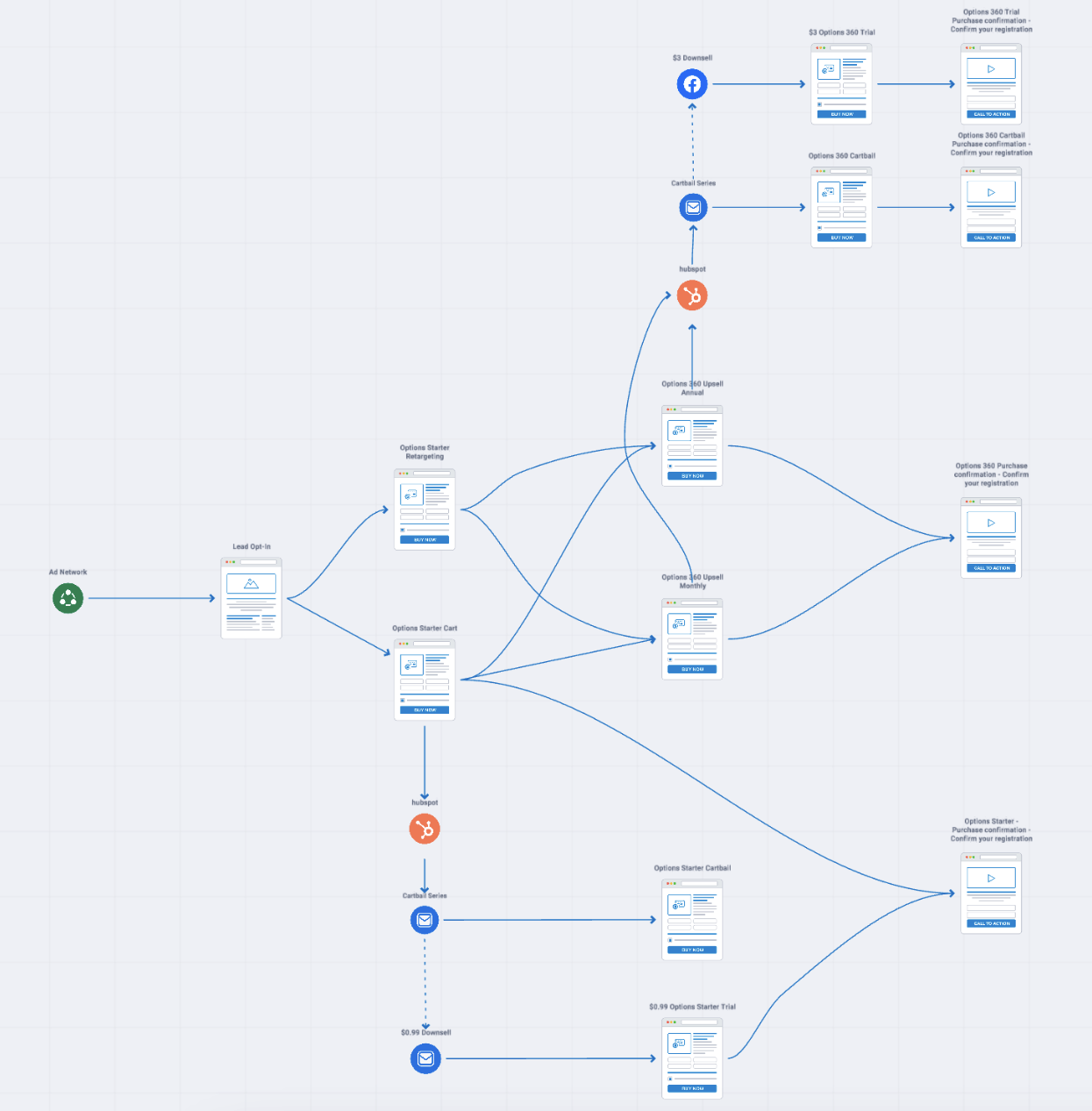As we near the start of 2024, tracking conversions has become an essential part of measuring the success of any online marketing campaign. However, with the decline of third-party cookies and increasing privacy concerns, marketers are facing new challenges in accurately measuring and analyzing conversions. This article explores the analytical approach to tracking conversions in a post-cookie world, discussing the impact of the shift from cookie-based tracking, the importance of data analysis, alternatives to cookie-based tracking, implementing a post-cookie conversion tracking strategy, and the future of conversion tracking.
Understanding the Post-Cookie World
The first step in effectively tracking conversions in a post-cookie world is understanding the changes that have taken place. Traditionally, cookies have been the go-to method for tracking user activity and attributing conversions. However, due to privacy concerns and increased browser restrictions, cookies are gradually becoming less reliable.
With the shift from cookie-based tracking, marketers need to explore alternative methods to accurately track conversions and gather valuable insights about customer behavior.
The Shift from Cookie-Based Tracking
Cookie-based tracking involves placing a small piece of code, known as a cookie, on a user’s browser when they visit a website. This cookie then records information about the user’s activity, allowing marketers to track their online behavior and attribute conversions to specific channels or campaigns.
However, many users are becoming more aware of the privacy implications of cookie tracking and are taking steps to block or delete cookies from their browsers. Additionally, browser updates and new regulations like the General Data Protection Regulation (GDPR) have imposed stricter restrictions on the use of cookies, making them less reliable for conversion tracking.
As a result, marketers are facing the challenge of finding new ways to track conversions and gain insights into customer behavior without relying solely on cookies.
Impact on Conversion Tracking
The decline of cookie-based tracking has a significant impact on conversion tracking, making it challenging to accurately measure the success of marketing efforts. Without cookies, marketers lose valuable data on user behavior, making it difficult to track users across devices and accurately attribute conversions to specific marketing activities.
However, this shift also presents an opportunity for marketers to explore alternative data sources and techniques to track conversions effectively and gain valuable insights into customer behavior.
One alternative method that marketers can consider is using first-party data. First-party data refers to the data collected directly from users who have willingly provided their information, such as through newsletter sign-ups or account registrations. By leveraging this data, marketers can gain a deeper understanding of their audience and track conversions more accurately.
Another approach is to utilize contextual targeting. Instead of relying on individual user data, contextual targeting focuses on the content and context of a webpage to deliver relevant ads. By understanding the context in which their ads are being displayed, marketers can reach their target audience without relying on cookies.
Furthermore, marketers can also explore the use of machine learning and artificial intelligence algorithms to analyze patterns and behaviors across various data points. By leveraging advanced technologies, marketers can identify trends and make data-driven decisions to optimize their conversion tracking strategies.
In conclusion, the post-cookie world presents both challenges and opportunities for marketers. While the decline of cookie-based tracking may make it more difficult to track conversions accurately, it also encourages marketers to explore alternative methods and technologies to gain valuable insights into customer behavior. By adapting to these changes and embracing new approaches, marketers can continue to effectively track conversions and drive successful marketing campaigns.
The Analytical Approach to Conversion Tracking
With the limitations of cookie-based tracking becoming apparent, a data-driven analytical approach becomes crucial for tracking conversions in a post-cookie world. Leveraging data analysis techniques allows marketers to gain deeper insights and make more informed decisions to optimize their conversion strategies.
When it comes to conversion tracking, data analysis plays a vital role in understanding user behavior and improving overall conversion rates. By analyzing the available data, marketers can identify patterns, trends, and correlations that can provide valuable insights into the effectiveness of their marketing efforts.
Importance of Data Analysis in Conversion Tracking
Data analysis allows marketers to go beyond surface-level metrics and delve into the underlying factors that drive conversions. It provides a comprehensive view of the customer journey, enabling marketers to identify the touchpoints that have the greatest impact on conversion rates.
By analyzing the available data, marketers can understand which channels, campaigns, or touchpoints are driving conversions and allocate resources accordingly. For example, they can identify the specific keywords or ad placements that lead to the highest conversion rates and optimize their advertising budget accordingly.
Furthermore, data analysis enables marketers to identify potential bottlenecks or barriers in the conversion journey and make data-driven optimizations to improve the overall conversion rate. For instance, by analyzing user behavior on the website, marketers can identify pages with high bounce rates or low engagement and make necessary improvements to enhance the user experience and increase conversions.
Key Metrics for Conversion Analysis
- Conversion Rate: The percentage of website visitors who complete a desired action, such as making a purchase or filling out a form. A high conversion rate indicates that the marketing efforts are effective in driving user actions.
- Attribution: Determining which marketing channels or touchpoints contribute to a conversion. Attribution analysis helps marketers understand the customer journey and allocate resources to the most effective channels.
- Customer Lifetime Value (CLV): The total value a customer brings to a company over their entire relationship. By analyzing CLV, marketers can identify high-value customers and tailor their marketing strategies to maximize long-term revenue.
- Click-Through Rate (CTR): The percentage of users who click on a specific link or advertisement. CTR is a valuable metric for evaluating the effectiveness of ad campaigns and optimizing ad placements.
- Return on Investment (ROI): Evaluating the profitability of marketing campaigns by comparing the costs with the generated revenue. ROI analysis helps marketers make data-driven decisions on resource allocation and campaign optimization.
These key metrics provide marketers with valuable insights into the effectiveness of their conversion strategies. By analyzing and monitoring these metrics, marketers can continuously optimize their campaigns, improve conversion rates, and drive business growth.
Alternatives to Cookie-Based Conversion Tracking
While cookies have been the primary method for conversion tracking, there are alternative approaches that marketers can explore in a post-cookie world.
In this ever-evolving digital landscape, marketers are constantly seeking innovative ways to track conversions and personalize marketing efforts. As the reliance on cookies diminishes, new strategies are emerging to fill the void and provide valuable insights into consumer behavior.
First-Party Data Collection
First-party data refers to data collected directly from a marketer’s own website or app. By leveraging user opt-ins, marketers can gather valuable data from their customers and use it to track conversions and personalize marketing efforts without relying heavily on cookies.
With first-party data, marketers have a direct line of communication with their audience. By implementing user-friendly consent mechanisms, such as clear and concise opt-in forms, marketers can establish a transparent relationship with their customers. This not only fosters trust but also allows marketers to collect relevant data that can be used to understand consumer preferences, behavior, and ultimately drive conversions.
Furthermore, by utilizing advanced analytics tools, marketers can gain deeper insights into customer journeys, identifying touchpoints that lead to conversions. This data-driven approach empowers marketers to optimize their marketing strategies, delivering personalized experiences that resonate with their target audience.
Privacy-Friendly Tracking Techniques
To respect user privacy while still tracking conversions, marketers can adopt privacy-friendly tracking techniques. Examples include using anonymized identifiers or utilizing consent-based tracking, where users have control over the data they share and can opt-in to tracking on their own terms.
Anonymized identifiers, such as hashed email addresses or device IDs, allow marketers to track conversions without directly identifying individual users. This approach ensures privacy while still providing valuable data for marketing analysis.
Consent-based tracking goes a step further by putting users in control of their data. By implementing user-friendly consent management platforms, marketers can provide clear information about the data being collected and allow users to make informed decisions about their privacy preferences. This not only builds trust but also ensures that the data collected is from users who genuinely want to engage with the brand, leading to more meaningful conversions.
Moreover, privacy-friendly tracking techniques align with evolving regulations and industry standards surrounding data privacy. By adopting these practices, marketers can demonstrate their commitment to user privacy and build stronger relationships with their customers.
As the digital landscape continues to evolve, marketers must adapt and explore alternative approaches to conversion tracking. By embracing first-party data collection and privacy-friendly tracking techniques, marketers can navigate the post-cookie era while still delivering personalized experiences and driving conversions.
Implementing a Post-Cookie Conversion Tracking Strategy
Successfully transitioning to a post-cookie conversion tracking strategy requires a systematic approach. By following a strategic plan, marketers can ensure a smooth transition and minimize any potential disruptions to their conversion tracking efforts.
Steps to Transition Away from Cookies
- Evaluate Current Cookie-Based Tracking: Assess the extent to which your current tracking heavily relies on cookies and identify areas for improvement.
- Explore Alternative Data Sources: Investigate other data sources, such as first-party data or data obtained through consent-based tracking, to fill the gaps left by cookie-based tracking.
- Invest in Robust Analytics Tools: Implement advanced analytics tools that can effectively process and analyze the available data, providing actionable insights for optimization.
- Test and Refine: Continuously test and refine your post-cookie conversion tracking strategy to ensure its effectiveness and accuracy.
Tools and Technologies for Post-Cookie Tracking
Several tools and technologies can assist marketers in implementing a post-cookie conversion tracking strategy. Customer Relationship Management (CRM) systems, data management platforms (DMPs), and advanced analytics tools can help gather, analyze, and attribute data to different marketing touchpoints.
Future of Conversion Tracking
Looking ahead, the future of conversion tracking lies in adapting to a cookieless environment while maintaining the ability to measure and optimize marketing efforts.
Predictions and Trends in Conversion Tracking
As cookies become less reliable, marketers can expect a shift towards more privacy-friendly tracking technologies. Contextual advertising, machine learning algorithms, and advanced attribution modeling are some of the emerging trends in conversion tracking.
Preparing for a Cookieless Future in Marketing
To prepare for a cookieless future, marketers need to embrace data privacy regulations and focus on building strong relationships with customers. Adopting privacy-friendly tracking techniques, investing in data analysis capabilities, and providing value in exchange for consent will be crucial for success in the evolving marketing landscape.
In conclusion, the demise of cookie-based tracking necessitates an analytical approach to tracking conversions in a post-cookie world. By understanding the shift from cookie-based tracking, embracing data analysis techniques, exploring alternatives to cookies, and implementing a well-planned conversion tracking strategy, marketers can navigate the challenges and optimize their marketing efforts in a privacy-conscious environment. As the future of conversion tracking unfolds, staying informed about emerging trends and preparing for a cookieless future will be essential for long-term success in the digital marketing realm.



